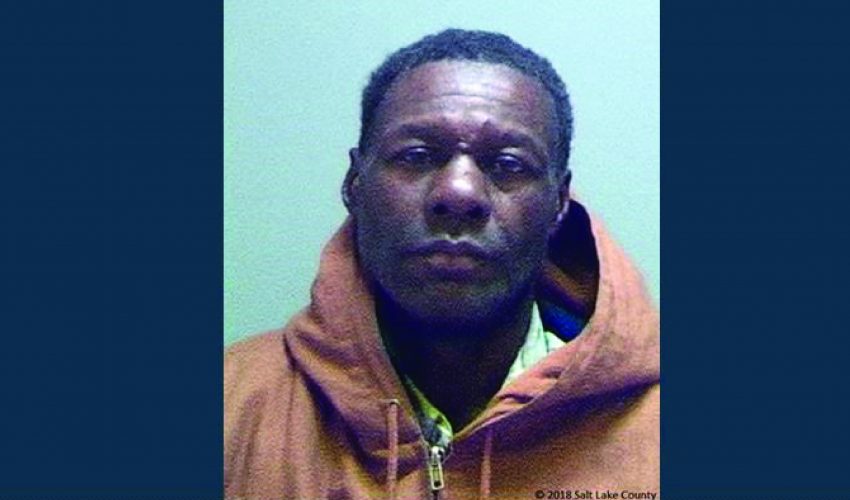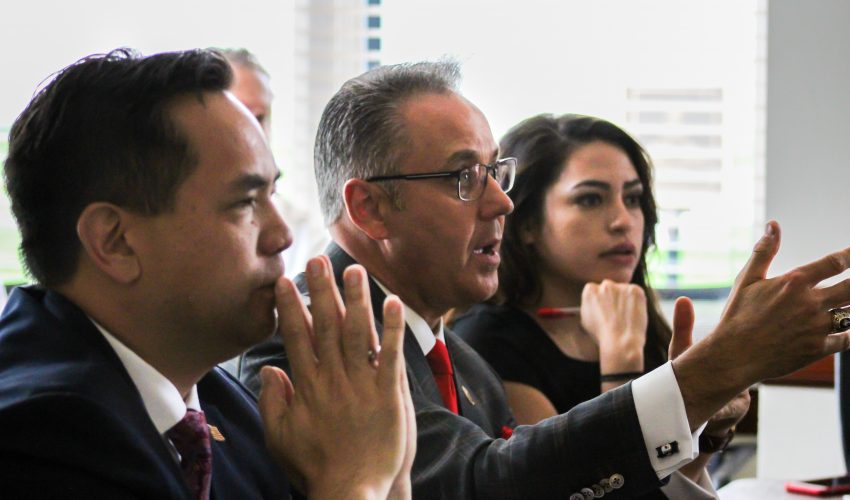FOR IMMEDIATE RELEASE
December 19, 2019
AGGRAVATED SEX TRAFFICKING CASE: CONSECUTIVE TERMS OF UP TO LIFE IN PRISON FOR UTAH MAN
SALT LAKE CITY – This week, James Savage Brown was sentenced to the maximum sentence on each of eight counts of human trafficking-related charges in the Utah Third District Court. Brown was convicted in August 2019 on each of the charges, which included Aggravated Human Trafficking, Aggravated Kidnapping, Rape, Forcible Sodomy, Aggravated Exploitation of Prostitution and Tampering with a witness.
“This is a case where the penalty has matched the severity of the atrocious crimes committed by James Savage Brown,” Utah Attorney General Sean D. Reyes said. “Human Trafficking is a brutal violation of human rights and dignity and I pledge every resource in my office to continue to fight it.”
Attorney General Reyes continued, “I’m extremely proud of our team—particularly Assistant Utah Attorney General Tye Christensen, former Assistant Utah Attorney General Russell Smith, along with our victim advocate group—for their hard work and dedication in this case and those other cases still under investigation.”
Background
Utah Attorney General SECURE Strike Force agents learned of Brown’s activity last year from one of the victims, S.S., after she was released from the Salt Lake County Detention Center. While there, S.S. encountered another woman, J.M., who had suffered similarly at the hands of Brown. Investigators later learned that J.M. had previously reported her encounter with Brown to the Salt Lake City Police Department. Both victims told stories of manipulation and coercion, including exploiting drug dependency, threatened or actual physical abuse, fear for their lives, and repeated attempts and/or success in forced commercial sex by Brown. Shortly after Brown was arrested, investigators overheard Brown, via telephone, direct an associate to tamper with a victim that Brown believed to be working with law enforcement.
Trial
At trial, the jury heard each victim-witness testify about how Brown victimized them and preyed upon their vulnerabilities. The victim-witnesses showed immense strength and authenticity in sharing such traumatic and personal experiences with the jury. During closing statements at trial, the jury was encouraged to consider the credibility of the victim-witnesses. After a few hours of deliberation, the jury convicted Brown on all counts.
Sentencing
At the sentencing hearing, Judge Parker with the Third District Court sentenced Brown to four terms of five years up to life in prison, one term of fifteen years up to life in prison, two terms of one year to fifteen years in prison, and a term of zero to five years in prison. The sentence of count one, five years to life in prison, will run consecutive to the remaining counts, the most serious being fifteen years to life in prison. This is the maximum possible sentence for these charges. Judge Parker explained that this sentence balanced the defendant’s interest in an appropriate length of imprisonment for rehabilitation with each victims’ interest in justice for what they experienced.
Acknowledgments
Human trafficking cases are very complex and require the strength and talents of many professionals in order to properly serve victims, as well as investigate and prosecute the criminal conduct. Attorney General Reyes wishes to thank the following organizations and individuals for their dedicated work in this case:
- The Utah Attorney General’s Office’s SECURE Strike Force, which is tasked with investigating human trafficking throughout the state. The case agent and lead investigator uncovered important evidence to corroborate the victims’ testimony, assisted the victims throughout their recovery and trial preparation, and testified at trial;
- The Salt Lake City Police Department, whose collaboration was instrumental in identifying victims, ensuring they received necessary medical care, and corroborating victims’ reports.
- Victim service providers with the Refugee and Immigrant Center, Asian Association of Utah (RIC-AAU). They coordinated and provided comprehensive services to the victims in this case, untethered to the victims’ cooperation in the prosecution;
- Victim service providers with Journey of Hope who initially referred the case and assisted victims throughout the case and in preparation for trial;
- The Utah Attorney General’s Office’s victim services coordinator, who worked tirelessly to ensure that the victims’ needs were met, and their rights were represented at every stage of the proceeding;
- Utah Attorney General’s Office Paralegal Michelle Rasmussen, who kept the case file for the prosecution, assisted in witness trial preparation, and organized and managed the evidence, exhibits, and witnesses for trial; and
- Assistant Utah Attorney General Tye Christensen and former Assistant Utah Attorney General Russell Smith, who filed the case, argued important evidentiary motions, presented the trial, and argued at sentencing.
If you encounter or suspect any form of human trafficking, you can report it to the National Human Trafficking Hotline, 888-373-7888, or text “HELP” to BeFree, 233-733.
###


